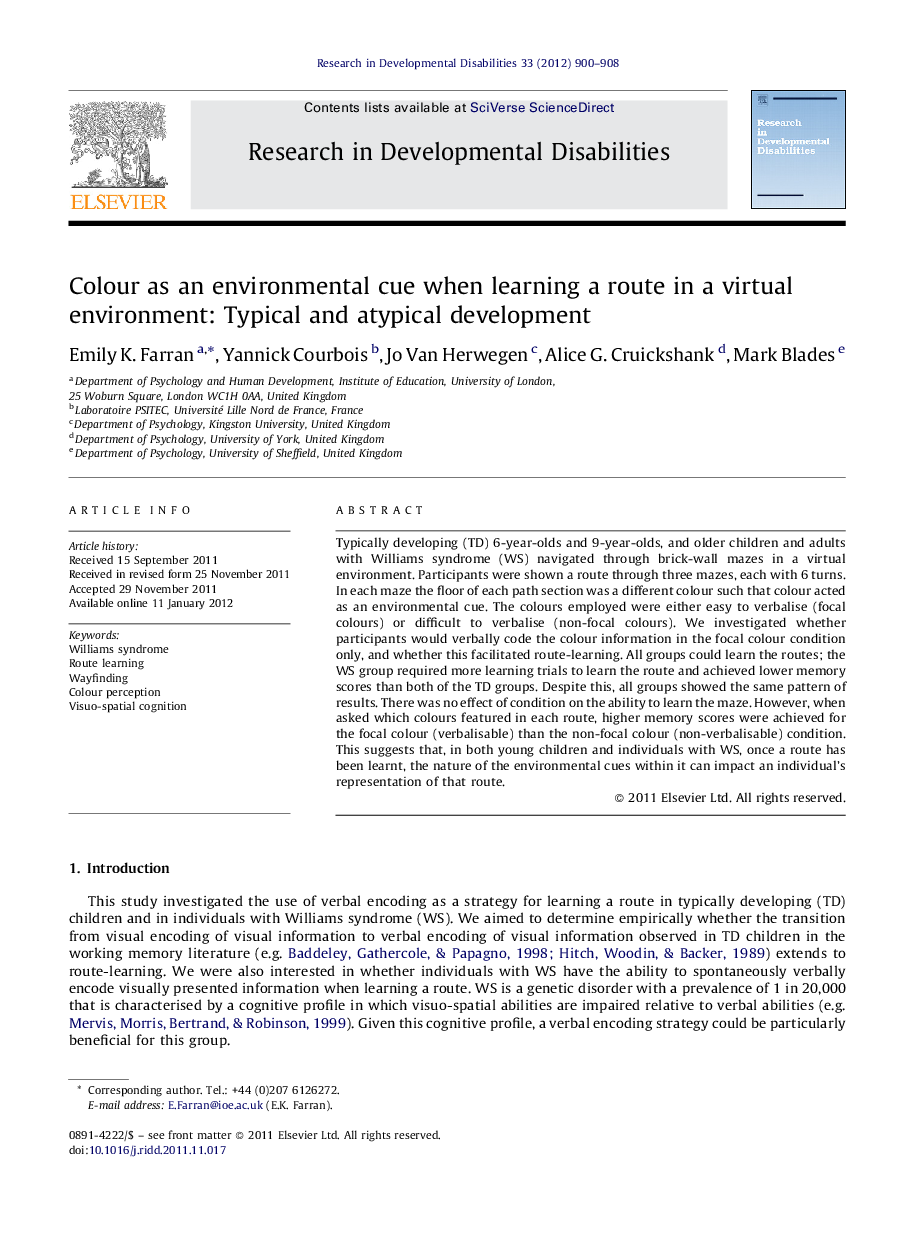| Article ID | Journal | Published Year | Pages | File Type |
|---|---|---|---|---|
| 371549 | Research in Developmental Disabilities | 2012 | 9 Pages |
Typically developing (TD) 6-year-olds and 9-year-olds, and older children and adults with Williams syndrome (WS) navigated through brick-wall mazes in a virtual environment. Participants were shown a route through three mazes, each with 6 turns. In each maze the floor of each path section was a different colour such that colour acted as an environmental cue. The colours employed were either easy to verbalise (focal colours) or difficult to verbalise (non-focal colours). We investigated whether participants would verbally code the colour information in the focal colour condition only, and whether this facilitated route-learning. All groups could learn the routes; the WS group required more learning trials to learn the route and achieved lower memory scores than both of the TD groups. Despite this, all groups showed the same pattern of results. There was no effect of condition on the ability to learn the maze. However, when asked which colours featured in each route, higher memory scores were achieved for the focal colour (verbalisable) than the non-focal colour (non-verbalisable) condition. This suggests that, in both young children and individuals with WS, once a route has been learnt, the nature of the environmental cues within it can impact an individual's representation of that route.
► Typically developing 6-year-olds and 9-year-olds, and participants with Williams syndrome took part. ► Participants learned a simple route through a virtual environment. ► Cues on each route were easy (focal colours) or difficult (non-focal colours) to verbalise. ► The ability to learn a route was not affected by cue-type. ► Memory of the colours on the route was higher for focal colour than non-focal colour cues.
